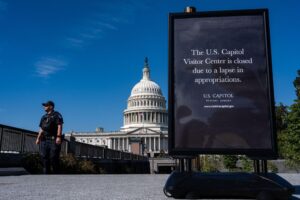Washington StateŌĆÖs Cap-and-Invest Offsets: A Dynamic Approach to Achieving Climate Targets
Washington State is intensifying its commitment to climate action through the deployment of Cap-and-Invest offsets, a cornerstone of the Department of EcologyŌĆÖs strategy to slash greenhouse gas emissions. This forward-thinking initiative empowers businesses to fund verified emission reduction projects beyond regulated industries, offering a market-based, adaptable pathway to fulfill the stateŌĆÖs stringent environmental objectives. As Washington accelerates its transition to a low-carbon economy, grasping the significance and influence of Cap-and-Invest offsets is vital for legislators, corporations, and citizens alike.
Understanding Cap-and-Invest Offsets and Their Role in WashingtonŌĆÖs Climate Ambitions
The Cap-and-Invest program in Washington harnesses offsets as a versatile tool to lower overall emissions while sustaining economic growth. These offsets enable regulated companies to support certified projects that reduce or sequester emissions outside their direct operations, facilitating compliance without compromising the stateŌĆÖs aggressive climate targets. Projects eligible for offsets include urban tree planting, biogas recovery from agricultural waste, and solar power installations, each generating tradable credits within the programŌĆÖs marketplace. This model not only drives environmental innovation but also fosters local employment opportunities and encourages sustainable development across communities.
Washington enforces rigorous criteria to guarantee that all offset credits are authentic, additional, verifiable, and enduring. Each project undergoes stringent third-party validation to uphold transparency and trustworthiness. Beyond carbon mitigation, the program emphasizes ancillary benefits such as enhanced air quality, biodiversity conservation, and social equity. The following table summarizes the fundamental components of WashingtonŌĆÖs offset framework:
| Offset Element | Description |
|---|---|
| Verification | Independent audits confirming emission reductions |
| Additionality | Reductions must exceed baseline business practices |
| Project Categories | Urban forestry, methane capture, renewable energy |
| Community Impact | Job creation, improved public health, environmental justice |
Overcoming Obstacles: Ensuring Compliance and Environmental Credibility
One of the primary challenges in rolling out Cap-and-Invest offsets lies in adhering to strict regulatory standards. Projects must satisfy complex verification protocols and accurately monitor emission reductions, which can be hindered by inconsistent data and evolving regulatory landscapes. Policymakers must craft clear, enforceable rules that align local, state, and federal requirements while closing potential loopholes that could undermine carbon reduction efforts. Market fluctuations also introduce uncertainty in offset pricing, complicating compliance strategies and necessitating resilient oversight mechanisms.
Maintaining the environmental integrity of offset initiatives requires careful management of key factors such as additionality, permanence, and leakage. Projects must prove that their emission reductions are genuine and not simply displacing emissions elsewhereŌĆöa phenomenon known as leakage. For example, a landfill methane capture project must ensure that methane emissions are not merely shifted to another site. Addressing these complexities demands cutting-edge verification technologies, adaptive governance, and active stakeholder participation to uphold transparency and public confidence.
| Challenge | Consequence | Mitigation Approach |
|---|---|---|
| Complex Verification | Delays in project approval | Standardized auditing procedures |
| Market Instability | Unpredictable offset prices | Flexible compliance options |
| Leakage Risks | Diminished net emission reductions | Comprehensive emissions tracking |
| Additionality Uncertainty | Erosion of program trust | Strict baseline establishment |
Enhancing Transparency and Accountability for Effective Climate Outcomes
Transparent governance and stringent oversight are critical to the success of WashingtonŌĆÖs offset program. The Department of Ecology employs rigorous third-party verification to confirm that emission reductions are genuine and measurable. Moreover, public access to comprehensive emissions data and project details empowers communities and stakeholders to hold the program accountable, fostering trust and encouraging active participation.
To further strengthen accountability, the Department advocates a multi-pronged approach including:
- Advanced registry platforms that provide real-time tracking of offset issuance, retirement, and transfers;
- Strict eligibility requirements emphasizing permanence, additionality, and ecological and social co-benefits;
- Ongoing audits and adaptive management to swiftly address discrepancies and market changes;
- Inclusive stakeholder engagement to ensure policies reflect community priorities and the latest scientific insights.
| Strategy | Objective | Benefit |
|---|---|---|
| Third-Party Audits | Confirm emission reductions | Builds program credibility |
| Transparent Registries | Monitor offset transactions | Enhances public confidence |
| Eligibility Criteria | Set quality benchmarks | Ensures environmental integrity |
| Stakeholder Participation | Incorporate diverse views | Improves policy effectiveness |
Policy Enhancements to Strengthen WashingtonŌĆÖs Cap-and-Invest Program
To maximize the impact of WashingtonŌĆÖs Cap-and-Invest offsets, it is crucial to enhance transparency and uphold the integrity of offset projects. Integrating advanced third-party audits alongside real-time emissions monitoring technologies will improve data accuracy and reinforce market trust. Expanding the portfolio of eligible projects to include cutting-edge carbon capture techniquesŌĆösuch as regenerative farming practices and urban green infrastructureŌĆöcan amplify emission reductions while delivering additional environmental and social benefits.
Recommended policy initiatives include:
- Enforcing stringent performance standards for offset qualification.
- Developing a dynamic pricing system that reflects the true cost of carbon emissions.
- Increasing stakeholder engagement to ensure equitable access and representation.
- Implementing adaptive management frameworks responsive to new climate science and market trends.
| Policy Component | Anticipated Outcome | Timeline |
|---|---|---|
| Third-Party Verification | Enhanced data reliability | Within 12 months |
| Dynamic Carbon Pricing | Market stability and growth | 18ŌĆō24 months |
| Broadened Offset Categories | Expanded emission reduction potential | Ongoing |
Final Thoughts: The Path Forward for WashingtonŌĆÖs Climate Leadership
As Washington State continues to evolve its greenhouse gas reduction strategies, the Cap-and-Invest Offsets program emerges as a vital instrument in balancing economic development with environmental stewardship. By enabling regulated entities to invest in credible, high-impact offset projects, the Department of Ecology is fostering a cost-effective and transparent pathway to meet climate commitments. The programŌĆÖs ongoing refinement will be closely observed as a potential blueprint for other regions seeking to harmonize growth with urgent climate imperatives. Residents, businesses, and policymakers are encouraged to stay engaged through official Department of Ecology updates to remain informed about future advancements.







